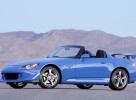While the first solar eclipse of the year was most visible just in Australia, people around the world were able to see the space spectacular through a live stream starting at 2 a.m. on Tuesday.
During the partial eclipse of the sun, Australia and Indonesia saw the sphere when about 65 percent of it was covered by the moon, Space.com reported.
The view wasn't as spectacular as it could have been since patchy clouds obscured the sun in Perth, The Sydney Morning Herald reported.
"For the first 20 minutes we had a really good view of the start of the eclipse, but then the cloud obscured our view," said outreach and education officer Kirsten Gottschalk, as quoted by The Sydney Morning Herald.
"After an hour or so, the clouds broke and there were beautiful blue skies, giving us a very good view of the eclipse."
The Slooh community telescope and the Virtual Telescope Project webcast the eclipse live at 2 a.m. EDT on Tuesday, which was Tuesday afternoon on Australian time.
The event was an annular solar eclipse, which happens when the sun is too distant from Earth to be totally blocked out. Also called a "ring of fire" eclipse, annular solar eclipses are marked by a distinct circle of sunlight around the moon's silhouette.
Unfortunately for astronomy enthusiasts, the "ring of fire" was only be visible from a certain place in Antarctica where penguins were its only viewers.
"This is a thoroughly bizarre eclipse," Slooh astronomer Bob Berman said in a statement quoted by Space.com. "When Slooh brings its live feeds from Australia, and we watch in real time as the inky black hemisphere of the moon partially obscures the sun, the greatest thrill might be an awareness of what's occurring--unseen by any human--in a tiny region of Antarctica."
People should be careful not to look at eclipses directly whether just with their eyes or through a telescope as they will risk severe eye damage.
"Even 1 percent of the sun is 10,000 times brighter than the moon, so during the annular eclipse, the sun is too bright to look at directly," Williams College officials wrote in an advisory. "If you have a special solar filter (or very dense welder's glass), or project the image onto another surface, you can detect that the sun is being covered by the moon."
The next partial solar eclipse is expected on Oct. 23 and should be visible from most of the U.S. and Canada, while the next total lunar eclipse should happen on Oct. 8.
See Now: OnePlus 6: How Different Will It Be From OnePlus 5?























